This Japanese Curry Pumpkin soup hits all the right notes - heat, creaminess and all around goodness. The recipe is suitable for many dietary styles - vegan, Paleo, gluten free, vegetarian. Everyone will love this soup, no doubt about it.
I've decided that Japanese curry is probably now my favourite type of curry, the diversity and combination of spices is really unmistakable. Paired with pumpkin, you really can't go wrong if you're after a warming winter dish.
This S&B curry spice blend is the spice used for different types of katsu curry - for example, breaded chicken or pork cutlets served with the curry sauce and rice. If you've never tried it, you need to go straight to your nearest Japanese restaurant, or you can always get the recipe for the traditional curry in Russ Crandall's excellent book Paleo Takeout.
Ingredients you need
- Pumpkin - any kind will work, but I love Japanese (Jap) pumpkin which is also known as kabocha squash
- Japanese curry powder - this curry powder has a gorgeous, unmistakeable flavour and it's my favourite type of curry powder. If you can't find it, you can try Ayam curry powder (see below)
- Brown/yellow onions - this brings a little extra sweetness and savoury note to the soup
- Garlic - essential for a curry experience
- Salt - nothing beats salt to really bring out the wonderful flavours of this soup
- Olive oil - used to sweat the onions and garlic and lightly cook the curry powder
- Coconut cream - adds a lovely creamy balancing note to the soup
- Water - to thin out the soup texture
- Optional - lemon juice or lime juice - adds some acid to really lift the ingredients
Where to find Japanese curry powder
Just a note about the curry powder, it seems to be hard to track down in Australia but it is on Amazon. The other places to find it are Japanese supermarkets or Asian supermarkets with a large Japanese section.
If you can't find it, then I recommend trying Ayam curry powder which is more of a South East/East Asian style of curry powder than say an Indian curry powder.
Preparing the ingredients - shortcuts!
If you, like me, loathe having to cut pumpkin in to pieces, you can roast pumpkin wedges whole with the skin on as in this method from Donna Hay. When you buy pumpkin, it may already be cut in to those large wedges, so that will save even more time! You can discard the seeds either before or after roasting - I find it easiest to scoop out the seeds to discard after roasting. Ensure that a knife goes through the flesh easily to check it's cooked through.
To save even more time, the onions and garlic cloves can also be roasted at the same time as the pumpkin - leave them whole and unpeeled, but add the garlic for the last 10 minutes only. The Japanese curry spices *must* be cooked though, so they can be heated with olive oil in a pan and then blended with the roasted pumpkin etc. Adding the raw spices to the soup just doesn't give you the same rich flavour.
If you don't tolerate coconut
I know some people don't tolerate coconut products - if this is the case for you, simply soak 50 grams of raw cashews in water for 4+ hours, blend with a little fresh water to make a cream before adding to the soup for a final blend.
Can this curry soup be made FODMAP friendly?
Absolutely! Omit the garlic and use garlic-infused olive oil. Replace the onion with chopped fennel and prepare in the same way as the onion. Or you can use onion infused oil. Lastly, you may want to add a little asafoetida spice (try ½ teaspoon to start) - this is considered a replacement for onion and garlic and can be purchased at Indian/South Asian grocery stores. Add it when you cook the curry spices.
What to serve this soup with
I've often served the curry soup with my purple sweet potato flatbreads! Purple sweet potatoes, or yams, are also very popular in Japan, so the combination of the curry and the flatbread is simply perfect.
I've added the recipe for homemade Furikake seasoning as well - I use this all the time and one recipe makes a big batch.
If you make this Japanese Curry Pumpkin Soup please tag me on Instagram and leave a star rating below! I'd love to know what you think.
Other soup recipes you'll love
I have lots of soup recipes for you to try!
- Miso Noodle Soup with Nori and Shiitake
- Lemongrass Noodle Soup with Ginger and Shiitake
- Silky Avocado and Leek Soup
- Silky Cauliflower and Leek Soup
Did you make this recipe? Leave a ⭐️⭐️⭐️⭐️⭐️ star rating and a comment below to let us know how it turned out. Save it for later by pinning to your favourite Pinterest board and make sure to tag us on Electric Vitality's Instagram to show off your cooking!
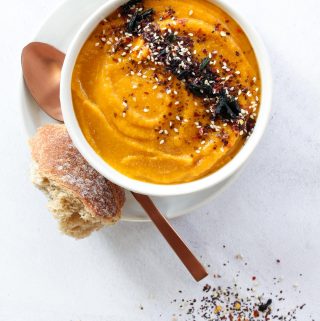
Japanese Curry Pumpkin Soup
Equipment
- Food processor, blender or stick/immersion blender
- Baking sheet and parchment paper
- Frypan/ saute pan
- Chopping board, knife
- measuring cups and spoons
Ingredients
- 1.5 kg (3 pounds) pumpkin (I recommend Japanese pumpkin or kabocha, cut in to large wedges)
- 4 cloves garlic, minced
- 2 small-medium brown/yellow onions, peeled and diced
- 3-4 tablespoons olive oil
- 4-5 teaspoons Japanese curry powder eg. S&B brand
- 3 cups water
- ¼ cup coconut cream
- 1 ½ teaspoons cooking salt
- juice of 1 lime or lemon optional
Instructions
- Preheat the oven to 200C/390F.
- Roast or steam the pumpkin wedges on baking trays for 45 minutes until a knife goes through easily, and let it cool slightly.
- While the pumpkin is roasting, prepare the garlic and onions as described.
- Sweat the onions in the oil on medium heat for 5 minutes. Add the garlic and stir for 2 minutes.
- Add the curry powder and mix well with the onion and garlic, stirring until fragrant (around 4 minutes). If the mixture is a little dry, add some more oil.
- If using a food processor or blender, add the cooked pumpkin, coconut cream, lime or lemon juice and the curry mixture to blend for a few minutes until smooth. Alternatively, place all the ingredients in a large saucepan and blend with a stick/immersion blender.
- Re-heat the soup and serve. You can garnish with coconut cream (perhaps watered down a bit to create a nice pattern on the surface of the soup) or with furikake seasoning.
- Leftovers may be stored in the fridge for up to 4 days or can be frozen for up to 3 months.
Notes
- I like to use Jap or Kent pumpkins - these are Australian varieties. I always look for a dark orange flesh. The Jap pumpkin is known as Kabocha squash in the US.
- Equipment: Food processor, blender or stick blender (a stockpot is needed if using a stick blender), frypan/skillet, knives, wooden spoon, chopping board, measuring cup and spoons.
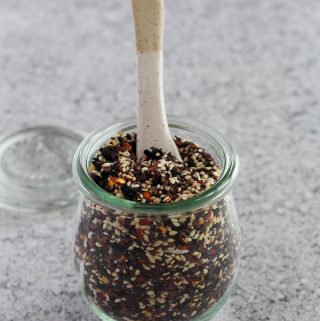
Furikake Seasoning
Equipment
- Blender (if using nori sheets)
- Frypan
- measuring cups and spoons
- Glass jar for storage
Ingredients
- ½ cup white sesame seeds
- 25 grams (1 oz.) nori sheets or flakes
- 25 grams (1 oz.) dulse flakes, wakame flakes or wakame pieces
- ½ teaspoon cooking salt
- 2 teaspoons chilli flakes optional
Instructions
- Toast the sesame seeds on low-med heat on the stove for 5-10 minutes and then remove from the heat.
- If using nori sheets, cut them in to strips about 2cm/1 inch wide. You can do them all at the same time by keeping them stacked. After cutting in to strips, cut again to form squares. Place them in the blender and gradually pulse them in to small flakes (say 2-3mm). Be careful as you don't want to turn it in to powder! This doesn't work in a food processor.
- If you are using wakame pieces (larger than flakes), then you need to break these down by pulsing a little in the blender to about the same size (2-3mm).
- Combine all ingredients in a clean glass jar and shake to combine.
- Store in the pantry for up to 2 months.
Notes
Hungry for more high quality recipes?
My second eBook, C’mon Gut Happy, is just what you need! Over 30 delicious plant based, gluten free recipes with evidence based ingredients to support your gut microbiome health!


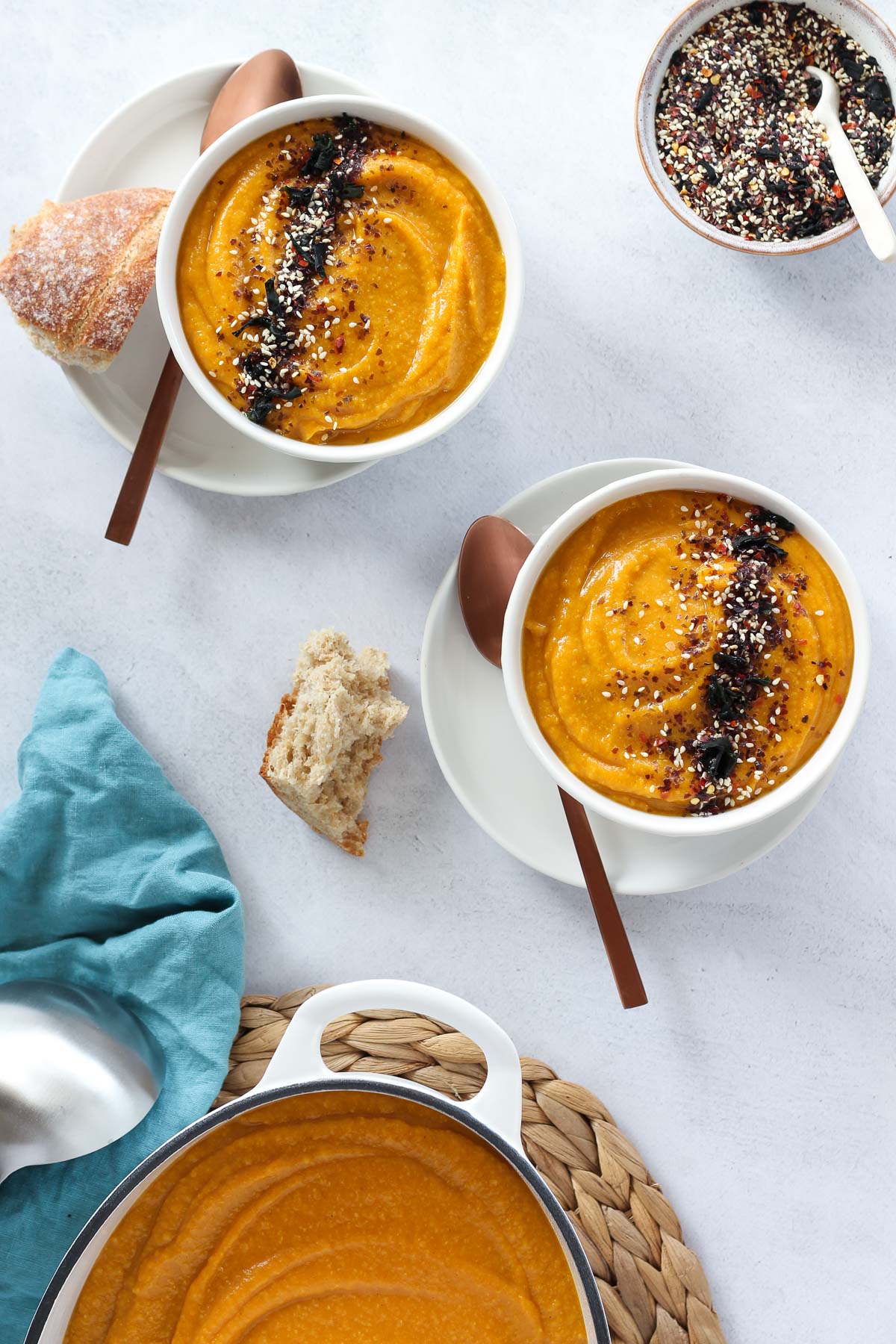
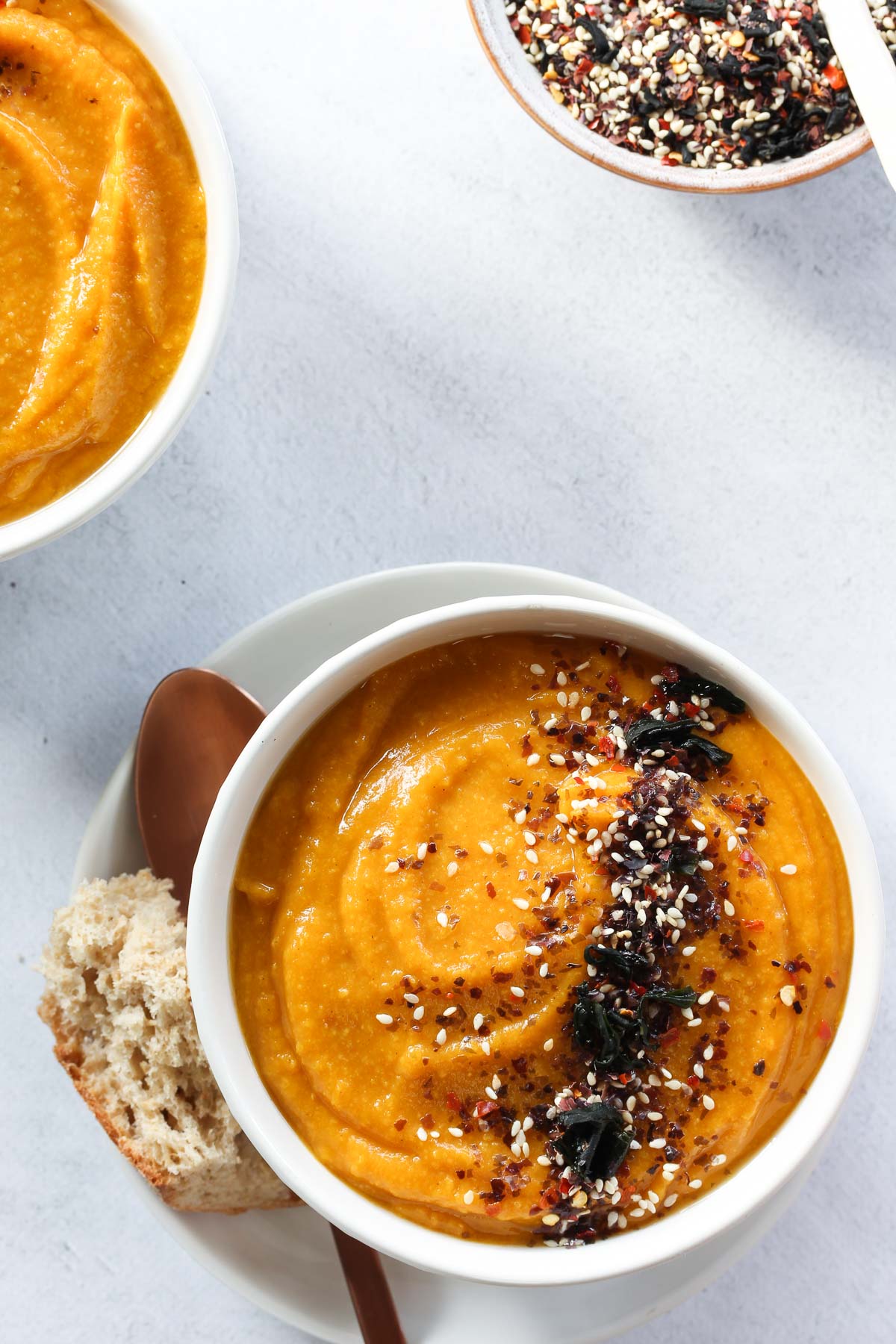
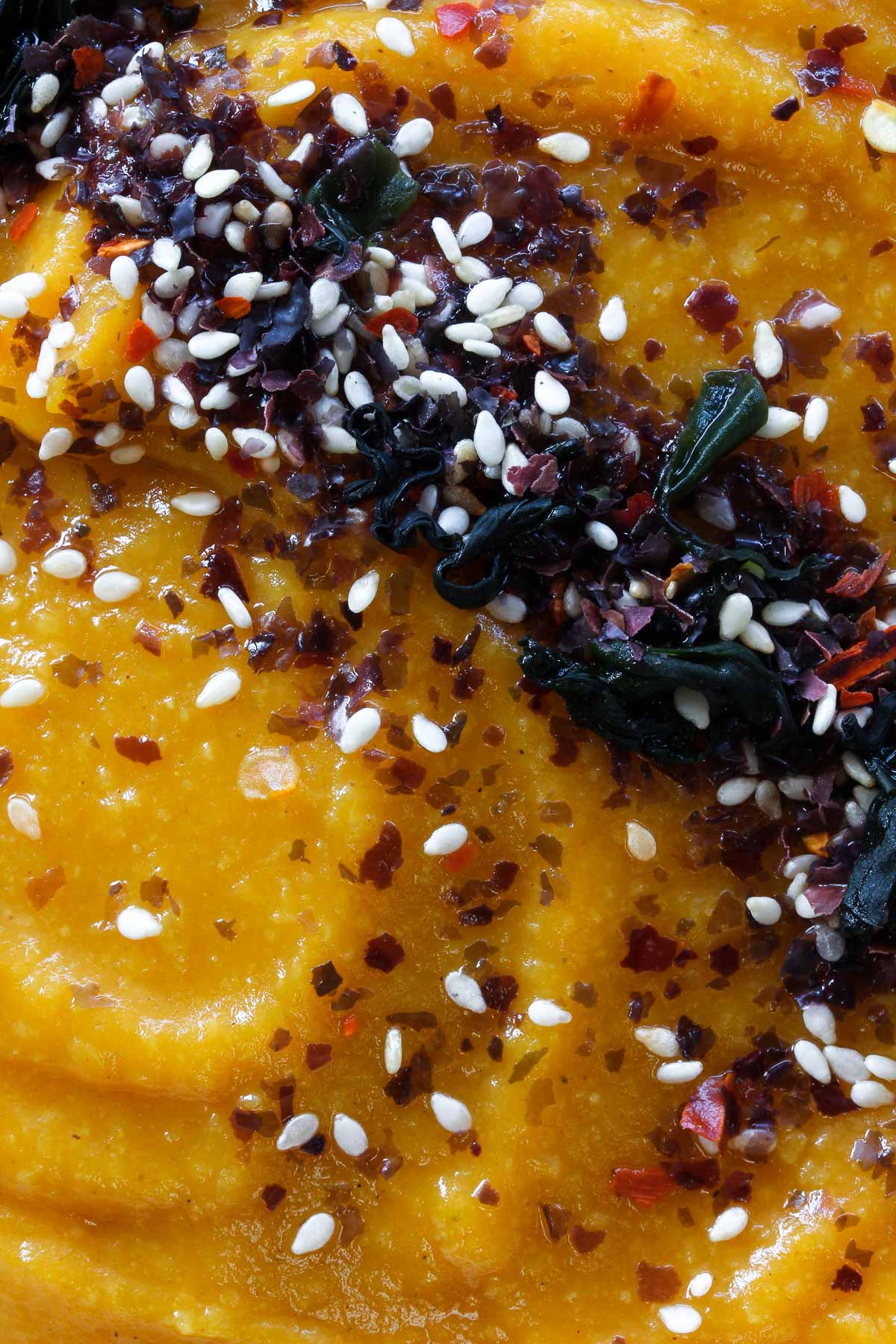

Leave a Reply